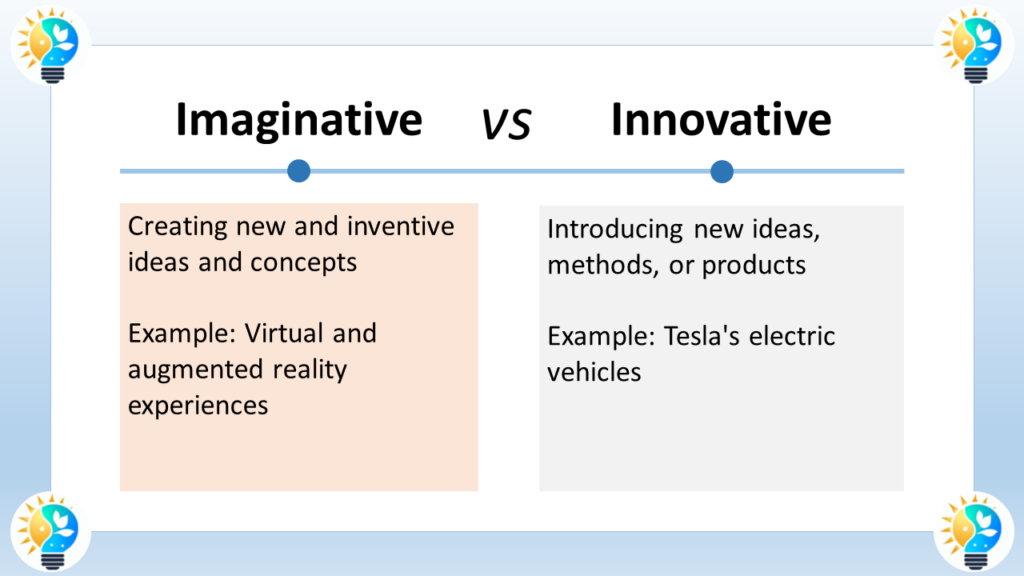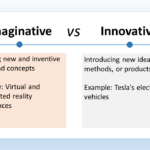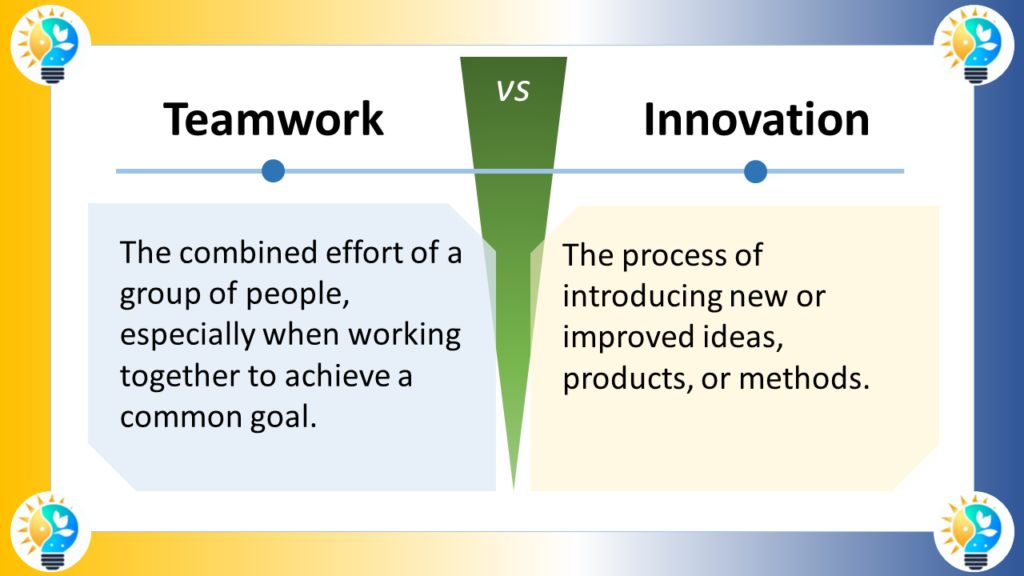Both terms involve creativity and inventiveness, but “innovative” implies a practical application or implementation of new ideas, while “imaginative” can refer to more abstract or fantastical ideas.

Definitions
When it comes to creativity, two terms often come up: innovative and imaginative. While both concepts are related to original thinking and new ideas, they have distinct differences.
Innovative
Being innovative means introducing something new or different, typically through improved products, ideas, or methods. It’s about finding unique solutions to existing problems and pushing boundaries to create something better. Innovation often requires a significant amount of research, analysis, and development.
For example, the invention of the smartphone was an innovative move. It combined the functionalities of a phone, computer, and camera into one compact device. This innovation revolutionized the way people communicate, work, and entertain themselves.
Imaginative
On the other hand, being imaginative means having a creative and inventive mind that can generate new and original ideas. Imagination involves coming up with new concepts, stories, or scenarios that may not necessarily be practical or feasible in real life.
For instance, writing a science fiction novel set on a distant planet requires a lot of imagination. The author creates a world that doesn’t exist, complete with unique cultures, species, and technologies. While the novel may not be innovative in the traditional sense, it requires a significant amount of creativity and imaginative thinking.
In summary, innovation is about creating something new and useful, while imagination is about generating new and original ideas. Both concepts are essential for creativity and progress, but they have different focuses and applications. By understanding the difference between innovative and imaginative, individuals and organizations can better harness their creative potential and drive innovation.
Innovative Terms

Innovation is considered as a driving force in progress.
It includes the introduction of novel ideas, methods, or products that bring positive change and advancement.
For more information about innovations, check our glossary
Innovative vs. Imaginative:
- Imaginative:
- Definition: Being imaginative refers to the ability to think creatively, come up with new ideas, and envision possibilities beyond the conventional.
- Process: It involves brainstorming, thinking about new concepts, and exploring unconventional approaches[2].
- Innovative:
- Definition: Innovation involves the implementation or creation of something new, turning ideas into practical solutions, and bringing them to market or widespread use[1][5].
- Relation to Creativity: Innovation is closely tied to creativity, as being creative is a prerequisite for being innovative[4].
In summary, being imaginative relates to creative thinking and generating new ideas, while being innovative involves putting those ideas into action, turning them into tangible outcomes or products for commercial success or widespread use.
- What is the difference between creativity and innovation
- Difference between Creativity and Innovation – javatpoint
- The Crucial Difference Between Creativity and Innovation — Creative Coach | Mark McGuinness | Since 1996
- The Curious Case of Creativity, Imagination & Innovation
- Innovation Definition – Innoway


